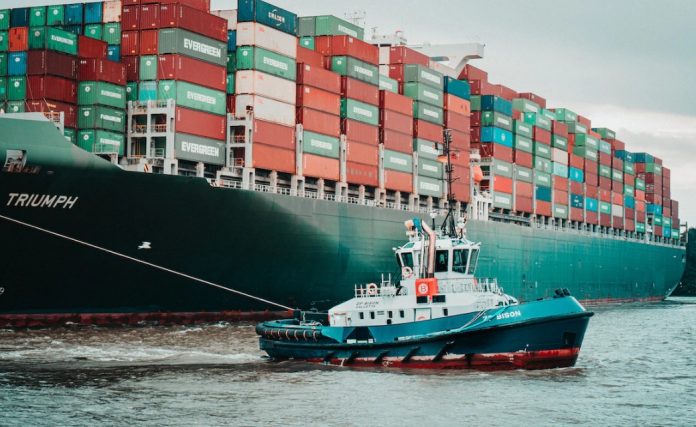During the 1990s, just-in-time (JIT) inventory techniques became increasingly popular. JIT allows firms to retain a limited quantity of inventory on hand. Stock expenses were reduced by employing JIT techniques. Everything needed to be altered.
The majority of trade conflicts in the late 2010s were between China and the United States. More and greater protectionist levies are now in effect. It has been demonstrated that JIT systems may be relied on. COVID-19 had already arrived at the time this was written.
COVID-19 swept around the planet in May of that year. Lockdowns, “remain where you are” orders, and travel restrictions all have a negative impact on the economy. While demand for some items increased, desire for others decreased.
Businesses were struggling, and the individuals in charge realized that if they wanted to continue in business, they needed to modify the way they delivered their goods. More than 93% of senior global logistics and supply chain management executives questioned from various sectors and locations of the world agreed that supply networks needed to be more flexible.
The same strategy was used to poll supply chain senior managers again in the second quarter of 2021. This time, we asked firms how they had improved their supply chain visibility software in the previous year, how these improvements compared to their initial preparations for the crisis, and how they expected these networks to alter in the next months and years.
The Impact of COVID-19 on Supply Chains
The Cold War, which lasted through the 1980s and 1990s, concluded with the Soviet Union’s demise. The world’s peace and security have improved. The maintenance of strong multinational alliances aided the globalization of international supply chain management.
Getting affordable insurance is similar to stockpiling goods. Investing in inventory is a waste of money unless there is a greater demand than supply chain logistics strategy. You don’t need to keep extras when you always have enough of anything. When there isn’t widespread disturbance, it seems like a waste not to employ inexpensive labor.
Capitalism ruled the globe. Market and democratic reforms were implemented under communist dictatorships such as China’s. In the former communist area of China, there are more millionaires than only Jack Ma. In China and Russia, both communism and capitalism have failed.
Jack Ma vanished after criticizing the Chinese government. The absence of Jack Ma was highlighted in the business press. Putin’s opponents in Russia are disappearing.
They were both opposed to globalization. Wars erupted in the corporate sector. The folks who pay taxes make new levies conceivable.
Authoritarian governments were not only unpredictable, but often brutal. Political instability may occur in prosperous countries as well.
There were several connections connecting distribution centers all around the world. COVID-19 then appeared. The supply chain process automation in the car sector did not operate effectively together.
Supply Chain Disruptions in 2020–2022
The most recent epidemic impacts raw materials used to manufacture final items. It examines how successfully multinational corporations can withstand storms in their organizations, budgets, operations, and economies. COVID-19 discovered flaws in several firms’ security and preparedness. Sixty-seven percent of CEOs indicated they want to spend more money on technologies that help them identify and solve problems.
How can companies ensure that the COVID-19 does not disrupt the global supply chain? Here are some of the most prevalent supply chain process automation concerns and the solutions that industry leaders are utilizing to make their systems more flexible and robust.
Transport Disruption
The 19 manufacturing delays for COVID were the subject of public attention. Stockouts and delayed deliveries happen as a result of producers’ competition for a finite supply of raw materials and delivery options. Life is a world of opportunities. The epidemic stimulated more research and enhanced supply chain visibility importance networks. Due to the outbreak, businesses are reviewing and reinvesting in their supply networks.
Manufacturing Snags
Despite the risks, many businesses depend heavily on a single supplier, customer (or export market), or other supply chain partner. Many companies are exploring at other trade agreements to make sure their logistics and supply chain software are prepared because COVID-19 has been postponed. Their network of vendors, clients, and logistical partners must grow. The supply chain management team keeps an eye on risks associated with online shopping and fake goods.
Excessive Reliance on a Small Number of outside Parties
Large sums of money have been spent over the past 18 months automating key supply chain elements including stores, warehouses, factories, and corporate offices. By utilizing cutting-edge track-and-trace and blockchain technology as well as more advanced digital enablers like cognitive planning and AI-driven predictive analytics, businesses will improve the integrity and visibility of secure supply chains in 2022.
Investing Twice as Much in Technology
Large sums of money have been spent over the past 18 months automating key logistics and supply chain software elements including stores, warehouses, factories, and corporate offices. Investments are anticipated to rise in 2022 as firms work to strengthen their fundamental supply chain planning capacities through the application of more sophisticated digital enablers like cognitive planning and AI-driven predictive analytics, as well as advanced track-and-trace and blockchain technologies to enhance the transparency and integrity of secure supply chains.
Cost of Commodities
Experts in supply chain management and procurement who are capable of more than just haggling are in high demand. If you have extensive knowledge of commodities, you’ll be able to negotiate the greatest price.
Employment and Labor
Due to the state of the labor market right now, many businesses are finding it challenging to project a recovery after COVID-19. Both white-collar and blue-collar workers are in limited logistics software programs. Businesses may also have to deal with issues unrelated to COVID-19 in addition to the scarcity of people brought on by rising demand following COVID-19.
Resources are impacted by population growth and changing topography. As Generation Z gets ready to enter the workforce, businesses need rethink how they hire and keep employees. Find out what motivates and inspires the millennial worker.
Resilient Global Supply Chains
As we adjust to our new normal, modifications to the supply chain will be required. Any plan for managing the supply chain must include an examination of the potential hazards. As a result, you may need to upgrade your software. These systems examine a large amount of data in order to identify faults in the supply chain.
Too many companies have thrown all they have at the East Asian market. Pandemics are diseases that spread all over the world. When a disease epidemic occurs, the production process is slowed.
Before COVID-19, China saw a few coronavirus epidemics this century. SARS killed out China in 2002, while Korea was attacked in 2012. In comparison to earlier pandemics, this one did not cause as much economic harm.
It is dangerous to rely just on one location, given the possibility of future pandemics and COVID-19 mutations. Risks in the supply chain must be distributed globally.
There have been several significant developments in shipping logistics software, such as tighter inventory control and increased production capacity.
How to Improve Supply Chain Process Now
Supply chain management, or SCM, is the process of planning and controlling a product’s production and distribution from the time it is manufactured until it is discarded when it is no longer usable.
SCM encompasses planning, sourcing, manufacturing, inventory management, and transportation in order to improve the flow of goods, information, and costs. Companies that utilize software to design and manage their supply networks may gain a significant competitive edge.
Supply chain management is a complex process that requires assistance from suppliers, producers, and the end users of the product. SCM focuses on managing change, working as a team, and managing risks in order to improve partner collaboration and engagement.
There are several issues with the supply chain visibility importance. According to surveys, 21% and 19% of supply chain professionals find it difficult to fulfill customer requirements and increase operational visibility, respectively. Both a competitive market and growing corporate costs stymie advancement.



































































